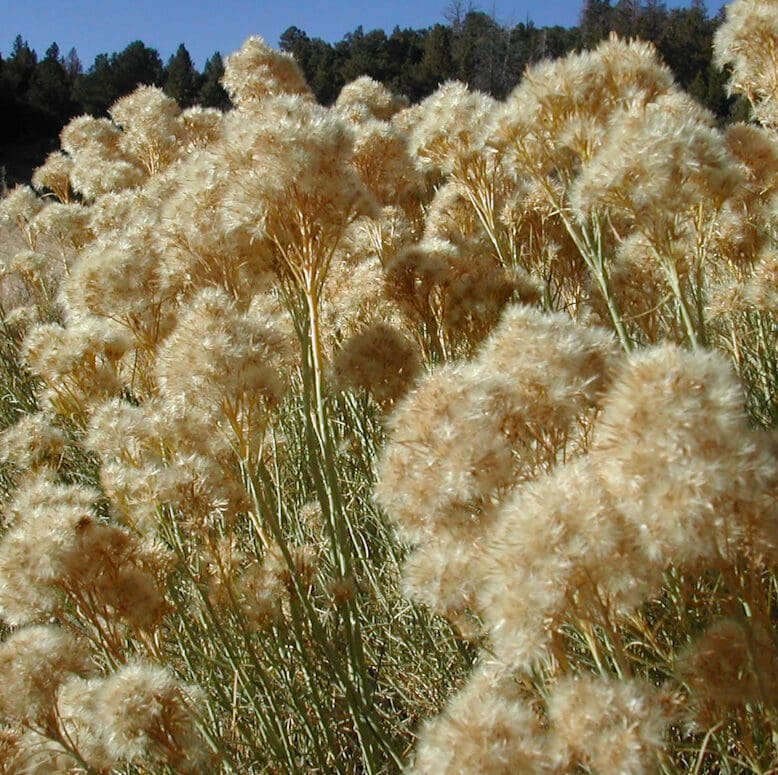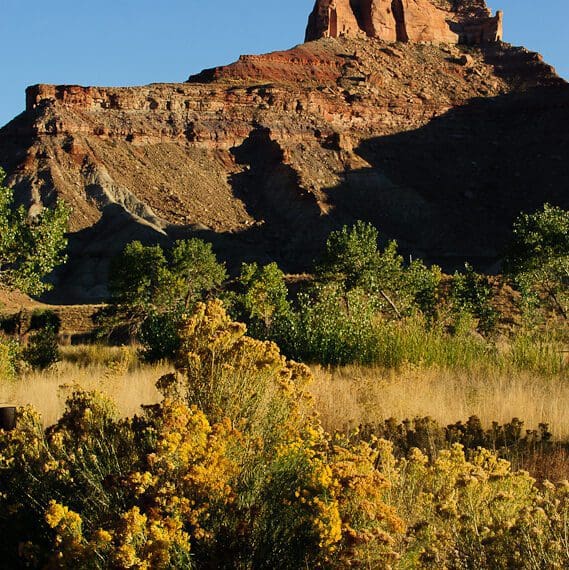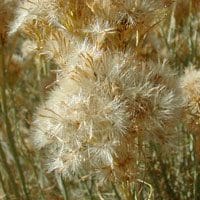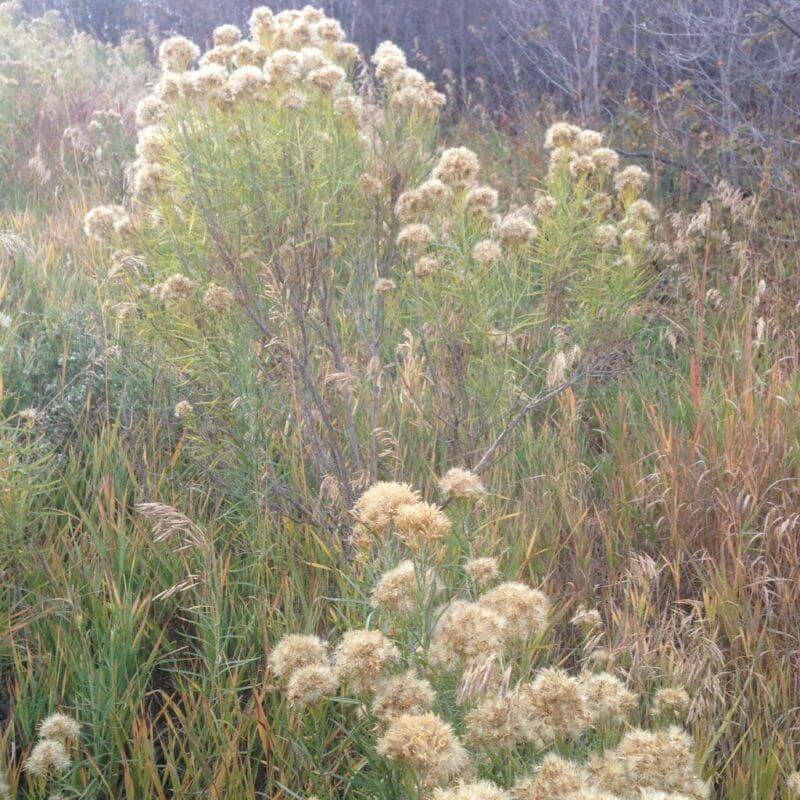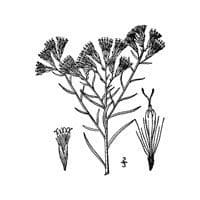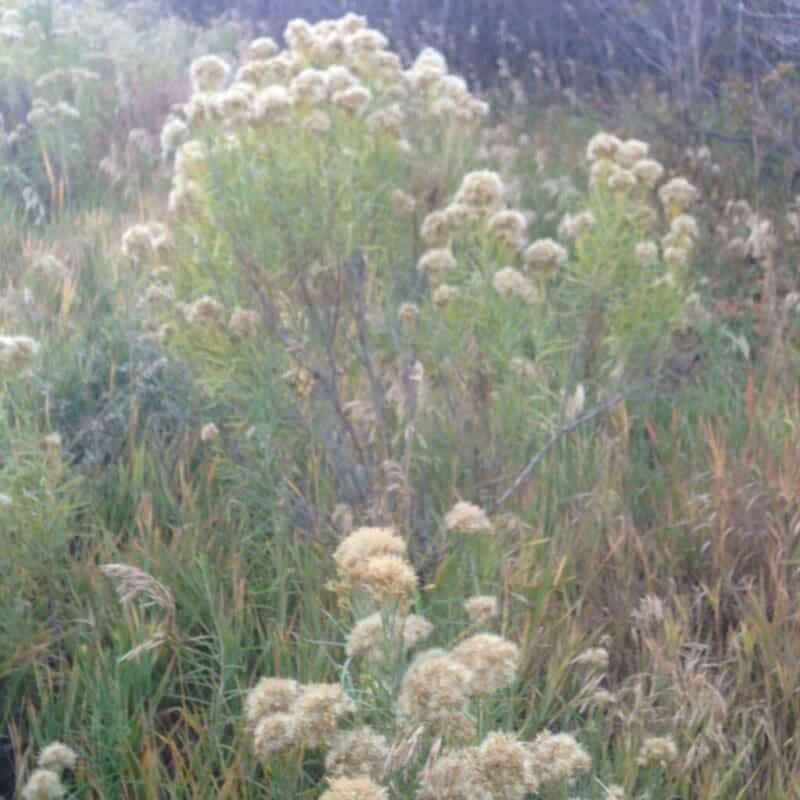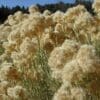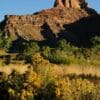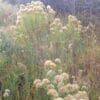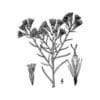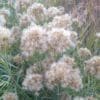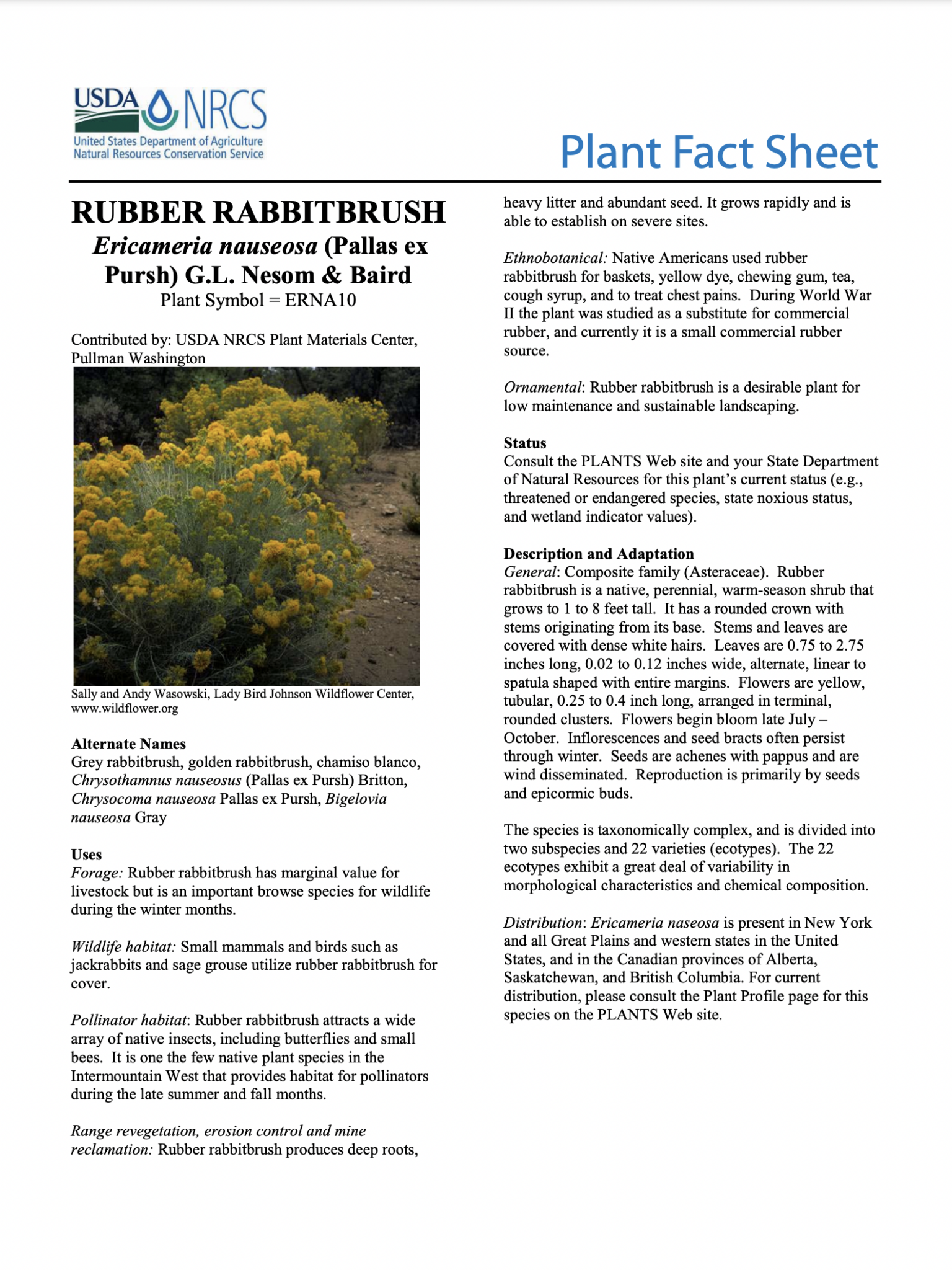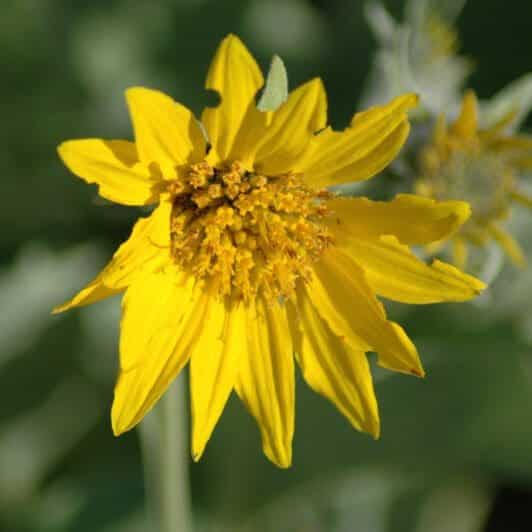Rubber Rabbitbrush
- Scientific name: Ericameria nauseosa
- Fast growing native shrub
- Excellent for reclamation and stabilization
- Widely adapted in ecoregion
- Thrives in a variety of soil types
- Showy and fragrant in the fall
- Important Sage Grouse habitat species
Rubber Rabbitbrush (Ericameria nauseousa), also know as Chrysothamnus nauseousa, is adapted to cold, dry environments receiving 7 to 18 inches of annual precipitation at elevations ranging from 450 to 8,000 feet. Rubber rabbitbrush can be found on loamy, sandy, gravelly or heavy clay soils that are slightly acidic, slight to strongly basic, or saline. Rubber rabbitbrush (Ericameria nauseousa) is deep rooted and produces heavy litter and has the potential to stabilize soils, moderate soil temperature and moisture, as well as add aesthetic value to degraded land. It grows rapidly and produces abundant seed. It can be used to stabilize roadsides and other critical areas of disturbance. The plant is able to grow on a variety of substrates, including sand, shale, slickrock and other unusual substrate types and is an ideal plant for reclamation.
Rubber rabbitbrush (Ericameria nauseousa) is a perennial native warm-season shrub that grows to 1 to 8 feet tall. Flowers begin bloom in late July in cool montane environments, in October in hot desert environments, and at variable times in cold desert environments.
This species is taxonomically complex and was once divided into 22 subspecies. The 22 subspecies have been reorganized into two subspecies and 22 varieties (ecotypes). The 22 ecotypes exhibit a great deal of variability in morphological characteristics and chemical composition.
Ericameria naseosa is widely distributed. It is present in New York and all western states in the United States, and in the Canadian provinces of Alberta, Saskatchewan, and British Columbia. It inhabits dry, open areas on plains, valley bottoms, foothills and mountains. It is associated with many ecological sites, including: oak- hickory, elm-ash-cottonwood, ponderosa pine, sagebrush, desert shrub, chaparral-mountain shrub, pinyon-juniper, and mountain, plains and desert grasslands. It is considered to be an early- to mid-seral species, and may dominate some sites following a disturbance. Over time it usually declines and becomes a minor component of the native plant community.
Rubber rabbitbrush has marginal value for all classes of livestock and has occasionally been reported to be toxic (Stubbendieck et al. 2003). It is, however, an important browse species on depleted range land and can be heavily used by wildlife during winter months (Utah State University 2009). Halls et al. (1994) report browsing animals, especially mule deer, use rubber rabbitbrush as forage in winter months but not in summer because the leaves have fewer secondary volatile chemicals in winter. Bhat et al. (1990) found some accessions of rubber rabbitbrush ranked high in crude protein, phosphorus and digestibility in comparison to other winter browse species, and suggested these accessions could be selected for superior germplasm releases.
The leaves, flowers and seeds of rubber rabbitbrush are a food source for deer, antelope, elk, small mammals and birds. The plant also provides cover for small mammals and birds such as jackrabbits and sage grouse.
Rubber rabbitbrush attracts a wide array of native insects, including butterflies and small bees. It is one the few native plant species in the Intermountain West that provides habitat for pollinators during the late summer and fall months.
The attractive, late-blooming flowers, silvery-green foliage, and drought tolerance of rubber rabbitbrush make it a desirable plant for low maintenance and sustainable landscaping. It is recommended by the Utah Native Plant Society as a screen or background for summer flowers.
Rubber rabbitbrush is fast growing, reaching maturity in 2 to 4 years, and has a lifespan of 5 to 20 years. Plants begin producing seeds when they are 2 or more years old. Seeds can be harvested in fall or early winter by shaking or stripping the heads from the branches. Processing in a hammer mill followed by a screen fanning mill effectively cleans the seeds prior to sowing.
***Click on the “Quick Plant Facts” tab above for more information.
Rubber Rabbitbrush NRCS Plant Fact Sheet
Rubber Rabbitbrush NRCS Plant Fact Sheet
PDF version of NRCS Plant Guide & Fact Sheet
Prepared By: Pamela L. Scheinost, USDA NRCS Plant Materials Center, Pullman, Washington
Joe Scianna, USDA NRCS Plant Materials Center,
Bridger, Montana
Daniel G. Ogle, USDA NRCS State Office, Boise, Idaho
Helpful Links
Additional information about this product can be found on the academic websites linked below.
Synonyms
Many plants have more than one common and scientific name. We've listed a few of them below.
- Rubber Rabbitbrush
- Ericameria nauseosa
- Gray Rabbitbrush
- Chamisa
Who is Great Basin Seed?
Great Basin Seed is a seed company that specializes in seed sales and consultation for home, ranch, farm, range and reclamation. We have been a leader in the seed industry since 1974.
Our History
We've been in the seed business since 1974.
What We Offer
We offer seed for home, farm, ranch, range and reclamation projects.
Meet the Gang
We have the best employees in the world! We are proud of the work they do, and trust them to serve you!
Right: Company founder Lloyd and his wife Paula Stevens in a wildflower seed production field circa 1977
